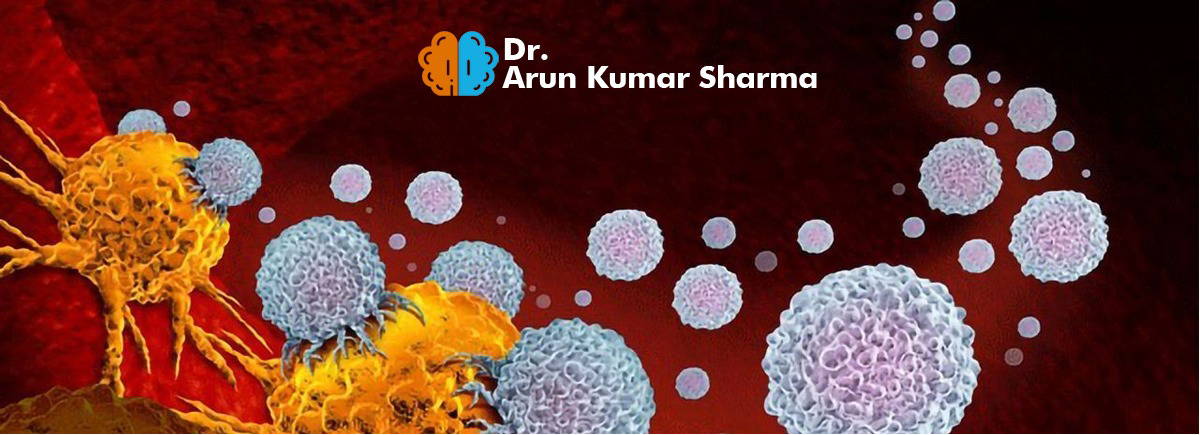
Immune reconstitution therapy for multiple sclerosis
Neuroscientists and immunologists have researched and developed a plethora of
disease-modifying treatment (DMT) drugs and procedures for the treatment of Multiple
Sclerosis (MS) over the past decade. As a neurologist, I get to be quizzed a lot about
these new drugs. Nearly every patient of Multiple Sclerosis has either read about them
or has been advised to start treatment with them by another neurologist.
These DMTs have varying immuno-modulatory and suppressing mechanisms and differ in their
respective intensity. Some of these therapies cause a long-term depletion of an
important type of immune system component called the B-cell, the cells that are derived
from bone marrow, such as Alemtuzumab, Cladribine, or Hematopoietic Stem Cell Transplant
(HSCT).
onventional Multiple Sclerosis medications are administered periodically, like various
injectable Interferons, or daily, like oral Fingolimod and Dimethyl Fumarate. These
drugs stay in the body for a short time and their adverse effects as well as beneficial
effects are temporary.
Conversely, with Immune Reconstitution Therapy, treatment is done in short courses
(pulsed manner). Therefore, the drug is only present in the body for a very short
period. But the clinical and MRI (Magnetic Resonance Imaging) beneficial effects are
long-lasting. This is like a ‘rebooting’ of the body’s immune system that has gone awry
and is attacking its own nervous system.
The current Immune Reconstitution Therapies available are Alemtuzumab, Ocrelizumab,
Ofatumumab, Cladribine, and Hematopoietic Stem Cell Transplant (HSCT).
There are some long-term follow-up studies with Alemtuzumab and Cladribine. With Alemtuzumab, it is seen that after 2 years there is a disease-free state, which is called No Evidence of Disease Activity (NEDA), in 30% of patients; that seems to continue out to 5 years. With Cladribine, half of the recipient patients have NEDA after 2 years. NEDA is more frequently seen with Hematopoietic Stem Cell Transplant; after 2 years, it is between 70% and 85%.
Summing up, let us assume that the currently available Immune Reconstitution Therapies are considerably more effective than conventional medications like Fingolimod, Dimethyl Fumarate, Teriflunomide, Interferons, and many others. Nevertheless, these revolutionary modern therapies cause an indefinitely prolonged remodeling of our body’s all-too-important Immune System, and we have only one of that to defend us from billions of pathogens like bacteria, fungi, parasites, and viruses circulating in our environment and billions of others yet to make a debut into our world. Besides, our immune system is also necessary for healing processes initiated and maintained in the course of a disease like cancer. Any permanent or semi-permanent alteration of our immune system may have absolutely devastating effects on our body. The term ‘reconstitution’ itself is entirely misleading. These drugs ‘deplete’ the immune system but do little to ‘replete’ it.
The immune system is an array of cells, T-cells (the memory cells, so named because they were originally thought to be produced by the Thymus gland), the B-cells (the first-responders, produced from the marrow of various bones in the body), and hundreds of chemical immune-transmitters called interferons, interleukins, and adhesion molecules. Multiple Sclerosis is an auto-immune disease, and it is an empirical thought that if we were to somehow destroy the immune system in a reversible manner and thereby wipe out its self-destructive memory pattern and allow a brand- new naïve immune system to emerge, the disease would just stop in its tracks. The incandescently glaring key word in this thesis is ‘reversible’. The mere thought that the outcome of this brilliantly researched and meticulously executed manipulation of the immune system turns out to be ‘irreversible’ is mortally frightening.
These new-fangled drugs cost millions of dollars to develop and there is a concerted campaign mounted by the pharmaceutical manufacturers to publicize and market these drugs. Suffice it to say that not all the advertising and sales practices of Big Pharma are either purely academic or above board.
I can’t over-emphasize that while selecting an appropriate therapy for Multiple Sclerosis, although the prospect of swallowing a few magic pills or receiving an infusion just once a year or a life-changing stem cell transplant is quite appealing, a careful and judicious evaluation of the ensuing deleterious and potentially irreversible effects on your immune system is critical. All said and done, Multiple Sclerosis is not the only disease that can happen to you in your lifetime, and you have got only one immune system to save you from the other ones.


